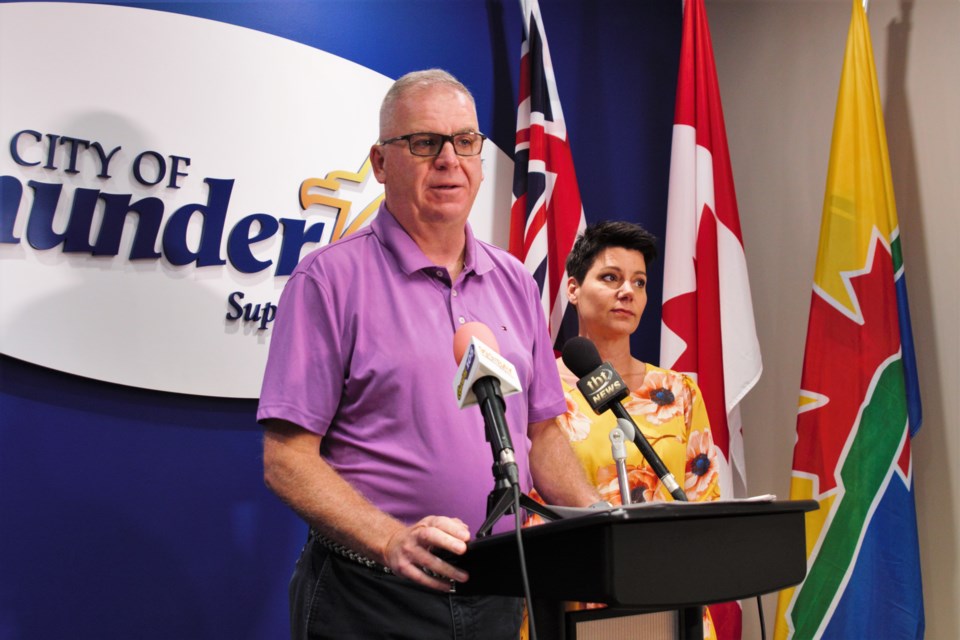THUNDER BAY — The City of Thunder Bay has released a new strategic plan, setting out a roadmap meant to establish top priorities for the 2022-2026 term of city council, and measure progress in reaching those goals.
The plan, titled ‘Maamawe, Growing Together,’ is focused around three “strategic pillars”: truth and reconciliation, safety and well-being, and prosperity and sustainability.
The plan remains a draft until it is officially adopted on Monday by city council, which held numerous meetings to craft it in recent months. A copy of the draft plan is available online.
The plan identifies between nine and 11 specific objectives under each of those pillars, though some remain relatively vague (“Develop the ability of all city staff to be effective and proactive equity champions,” "support residents to implement initiatives that connect neighbourhoods.")
Its goals, timelines, and metrics will be fleshed out over the coming months in an “action plan” meant to guide implementation. The city will open a public survey seeking feedback on what steps the city should take to reach those goals later this month.
Highlights of the plan’s 30 objectives include:
- Prioritize development in the urban intensification zone
- Advocate for provincial funding to recognize the city’s role as a regional hub
- Revise policies and procedures to enhance access and experiences for Indigenous residents
- Improve participation in municipal decision-making by historically marginalized people
- Support harm reduction by decriminalizing people who use drugs
- Invest in green and climate-resilient infrastructure
- Accelerate initiatives to reduce greenhouse gas emissions
The strategic plan sets out “key performance indicators” for some, but not all, of those objectives.
Progress on the city’s goal to “take decisive action to respond to the climate emergency,” for example, will be measured in part by the percentage of the city budget dedicated to climate adaptation.
Staff will report on progress to city council on an annual basis.
The strategic plan does not identify any specific infrastructure projects, unlike the previous 2019-2022 plan, which named an indoor turf facility, waterfront trail, and new art gallery as priorities.
A 2022 final progress update on the previous plan suggested 14 of 33 goals would be achieved by year-end, while 15 were ongoing, two were off target, and two were deferred.
Objectives not achieved in the plan’s time-frame include opening of the indoor turf facility and art gallery, developing an asset management plan, and evaluating the sister cities program.
At a Thursday press conference marking the public release of the plan, city manager Norm Gale said he was satisfied with that record, given the arrival of the COVID-19 pandemic shortly after its approval.
“I think we did everything we possibly could in a world that had cracked in half,” Gale said at a Thursday press conference.
Staff said the results of the city’s 2022 citizen satisfaction survey were crucial to informing the strategic plan.
The survey identified crime and safety, the economy, and community health and well-being as top priorities residents believe city council should tackle.
“The survey also revealed a need to focus on truth and reconciliation, because community members continue to rate racism as a serious issue in our community — and particularly, those who are of Indigenous, Metis, or Inuit background have lower quality of life scores,” said director of strategic initiatives Tracie Smith.
The plan is not set in stone, and council retains the ability to be “nimble” and make decisions that contradict it, Gale noted.
“City council remains free to make decisions within their purview, regardless of this strategic plan,” he said. “But the plan does set the direction and the tone of city council for this term, does provide expectations that ought to be held to… and does give administration direction.”
While previous strategic plans have expired at the end of each term of city council, staff recommend the latest version remains in effect through the end of 2027, just over a year after a new council is elected.
That will avoid a gap where no strategic plan is in place and give the incoming council more time to settle on priorities, staff said.
